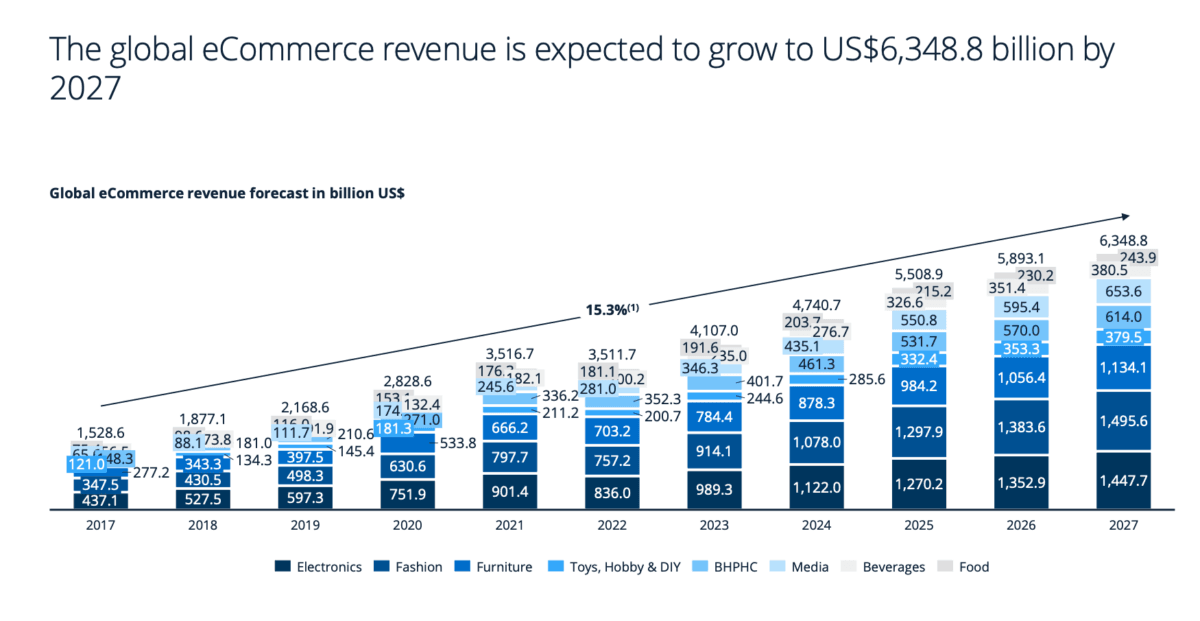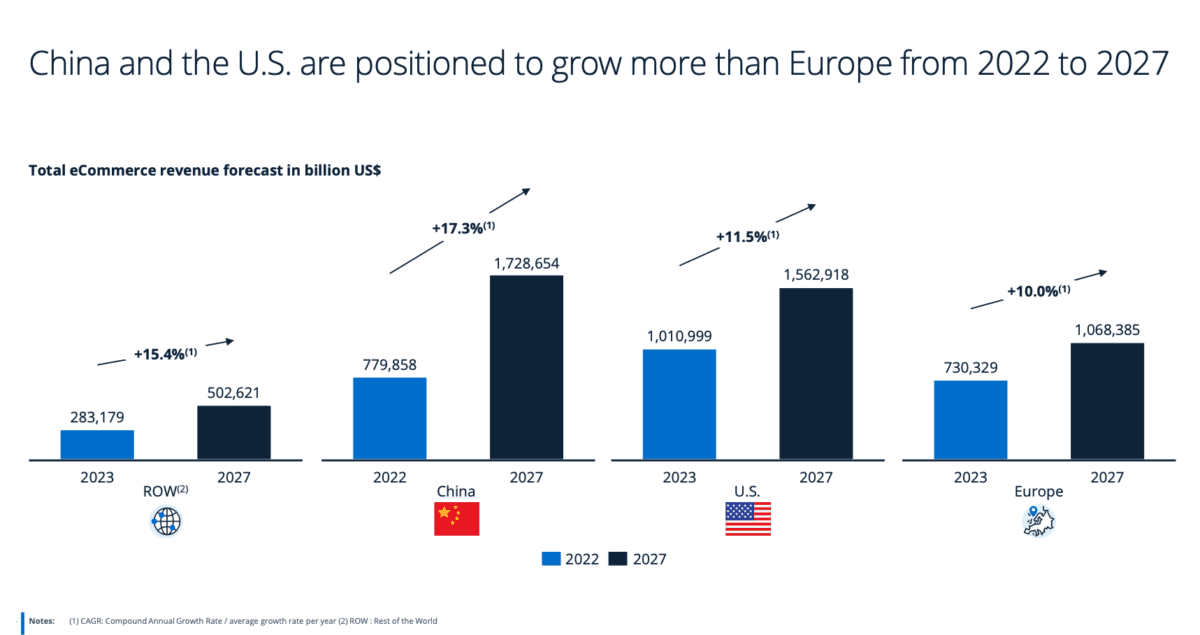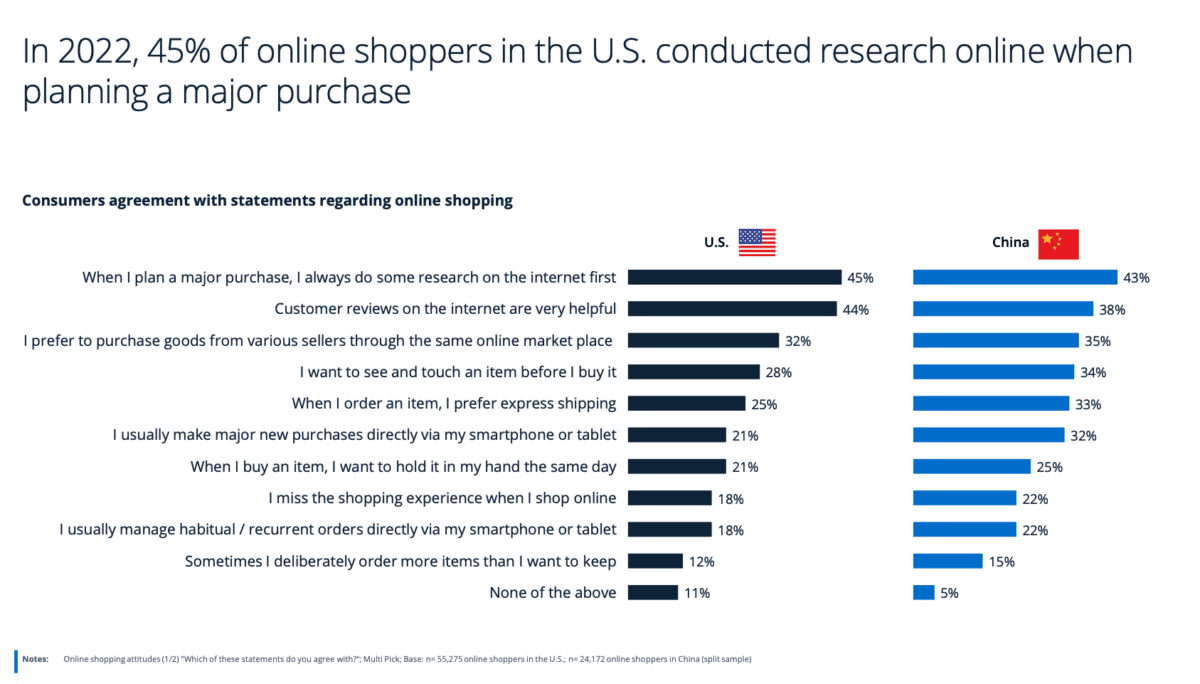business resources
Unveiling The Global eCommerce Landscape: Insights From A Comprehensive Study By Flyers-on-line.om
12 Feb 2024, 5:44 pm GMT
Which nation takes the lead in terms of value in the eCommerce market? How does a region effectively compete with global counterparts in the digital age? Addressing these intriguing questions, a recent and extensive study conducted by flyers-on-line.com thoroughly explores and analyses eCommerce markets worldwide.
The global eCommerce arena is anticipated to experience substantial expansion. The study by flyers-on-line.com projects global eCommerce revenue is set to surge by 64.69% from 2023 to 2027, reaching an impressive $6.34 trillion. The study conducted a thorough analysis across various sectors, encompassing fashion, electronics, and, unexpectedly, food. Each sector underwent evaluation based on global revenues in USD, with a specific focus on high-performing sub-sectors such as consumer electronics.
Furthermore, the study delves into the dynamics and strategies employed by major eCommerce players. For example, Amazon, with a Global Gross Merchandise Value (GMV) of $692.8 billion, concentrates primarily on electronics and media.
E-commerce expert at Flyers-on-line comment:
"China's 17% growth in eCommerce is more than just impressive numbers; it's a demonstration of agility in a rapidly digitizing world. The unexpected reign of fashion over electronics hints at evolving post-pandemic priorities. But it's the rise in sectors like 'Toys, Hobby & DIY' that intrigues the most.”
The global scenario of ecommerce markets: Key findings of the study
The eCommerce industry is anticipated to achieve a milestone of US$6,348.8 billion by 2027, primarily driven by substantial growth in the Fashion, Electronics, and Furniture segments. Projections indicate that these key sectors will contribute revenues of US$1,495.6 billion, US$1,447.7 billion, and US$1,134.1 billion, respectively, by 2027. Additionally, promising gains are expected in smaller segments like Toys, Hobby & DIY, and Media.

China emerges as the indisputable leader, boasting a market value of $779.858 billion in 2022, predominantly propelled by the electronics sector. This is expected to more than double, reaching approximately $1.73 trillion by 2027. Europe and the United States also play pivotal roles in this rapidly expanding field, with Europe anticipated to generate revenues of $730.3 billion in 2023, while the United States is projected to contribute $917.6 billion.
China is poised for remarkable growth, with eCommerce revenue set to surge by over 17%, catapulting from US$779.858 billion to an astonishing US$1,728.654 billion. The U.S. is not lagging behind, demonstrating commendable growth at 11.5%, pushing its revenue from US$1,010.999 billion upward. Europe, although trailing, exhibits promise with a growth rate of 10%, elevating its revenue from US$730.329 billion to US$1,068.385 billion.

Divergent Consumer Spending Trends: A Comparative Analysis
In the year 2023, the average global per capita consumer spending reached $14,236, with Europe surpassing this figure at $21,499. Leading the spending in Europe were the U.K. and Germany, while China reported a comparatively modest per capita spending of $5,360.
Looking ahead to 2027, the United States is anticipated to experience a slight decline in the average revenue per user in the electronics and household appliances sectors. In contrast, Europe and China exhibit diverse but generally stable or growing trends in these specific sectors. This data emphasises the distinctions in consumer purchasing power and preferences prevailing across these regions.

In both the United States and China, consumers extensively conduct research before making significant purchases, with 45% of them relying on online reviews and expressing a preference for consolidated online marketplaces. Variances become apparent in shipping preferences and mobile shopping behaviors, with Chinese consumers displaying a heightened preference for express shipping and mobile transactions. Interestingly, both nations also share a sentiment of nostalgic longing for traditional shopping experiences.
Share this
Contributor
Staff
The team of expert contributors at Businessabc brings together a diverse range of insights and knowledge from various industries, including 4IR technologies like Artificial Intelligence, Digital Twin, Spatial Computing, Smart Cities, and from various aspects of businesses like policy, governance, cybersecurity, and innovation. Committed to delivering high-quality content, our contributors provide in-depth analysis, thought leadership, and the latest trends to keep our readers informed and ahead of the curve. Whether it's business strategy, technology, or market trends, the Businessabc Contributor team is dedicated to offering valuable perspectives that empower professionals and entrepreneurs alike.
previous
Globalizing Your Workforce: The Whys and How-Tos
next
How to Deliver Effective First Aid Information to Employees